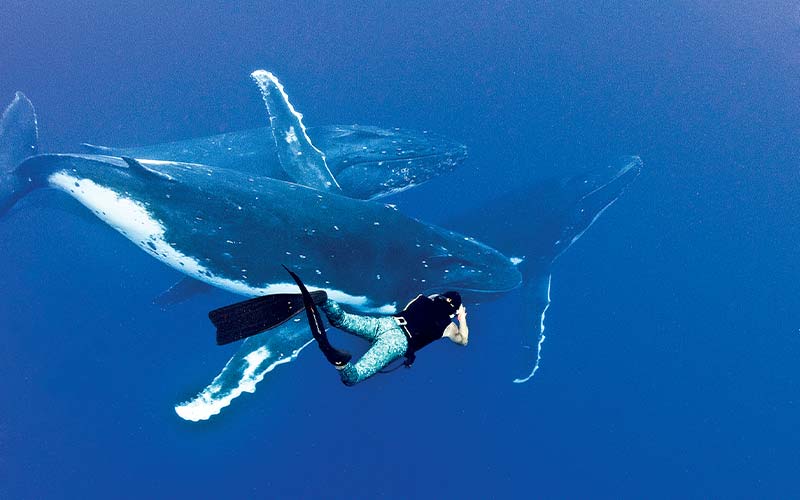Conventional wisdom holds that diving mammals do not suffer from decompression sickness (DCS). This is based on two key points: First, evolution has allowed them to adapt to the diving world and, second, their gas supply is limited to a single breath hold. As time often shows, however, experience can be at odds with conventional wisdom.

Anecdotal reports of symptoms consistent with DCS in extreme human breath-hold divers and substantial amounts of physical gas found in some stranded marine mammals raise questions about the decompression implications of breath-hold diving. The Woods Hole Oceanographic Institution Marine Mammal Center recently took the initiative to host a workshop that brought together experts from many fields to review the current knowledge. The panel included specialists in human dive medicine, physiology and decompression modeling and marine mammal medicine, pathology, anatomy, physiology, ecology and behavior. The meeting was held at Woods Hole in Massachusetts in April 2010. The consensus of this panel was reported in a paper published in the Proceedings of the Royal Society – Biology.
The effects of pressure and the hazards of DCS are well known to human divers. The increase in ambient (surrounding) pressure causes inert gas to flow from the compressed-gas source into the lungs and then throughout the body. The relative excess of inert gas flows out of the body through the lungs during and following ascent. If the pressure reduction is too great for a given inert gas load, bubbles may form in tissues, and a cascade of events may be initiated that results in symptoms of DCS. Human divers control decompression stress by limiting the dive exposure and/or following experimentally derived or mathematically derived decompression schedules.

Marine mammals dive routinely and repeatedly to impressive depths without the benefit of dive computers or dive tables but also typically without obvious injury. In addition to the limited amount of gas in a single breath, gas compression and collapse of some small airways trap gas within portions of the lungs to reduce the volume of gas that reaches the blood and other tissues. These factors do not stop all delivery, though, as indicated by substantial gas volumes observed in recently stranded animals that cannot be explained by decomposition. In addition, necropsy studies have found lesions consistent with chronic tissue damage as might be expected from repetitive decompression stress. Ultimately, these findings encourage a shift in thinking about marine mammals and decompression.
There are several mechanisms that likely reduce the decompression stress in marine mammals, even if to a lesser degree than previously believed. The single breath of air does limit source gas, more so for species that dive following partial exhalation from the lungs. The collapsing airways will reduce uptake of inert gas by the blood, at least during deeper dives. The reduction in blood flow to nonessential tissues (part of the diving reflex) will also reduce inert gas delivery to tissues. It is important to appreciate that while these factors reduce the risk, they do not eliminate it, particularly for the more extreme divers. Ultimately, it is likely the dive profile, lung volume and predive surface interval balance the needs of thermoregulation, digestion, buoyancy control, hunger, predator/prey interactions and exertion to determine the actual decompression stress for a given dive or day. Voluntary and/or reflexive control over behavior and the physiological responses to diving may alter the risk-reward balance. Extending surface intervals or adding partial-depth dives to reduce or resolve bubble formation may be strategies — conscious or unconscious — that reduce decompression stress.
Future research is needed to improve our understanding of the practical limits of the protections enjoyed by marine mammals, the normal patterns and consequences of bubble formation and how marine mammals and humans differ in their response to bubbles and tissue injury. It is likely that emerging technologies to collect real-time data from free-ranging marine mammals will be critical to answer the many open questions.
For now, the available evidence indicates marine mammals manage decompression stress more than they avoid it.
© Alert Diver — Q2 Spring 2012